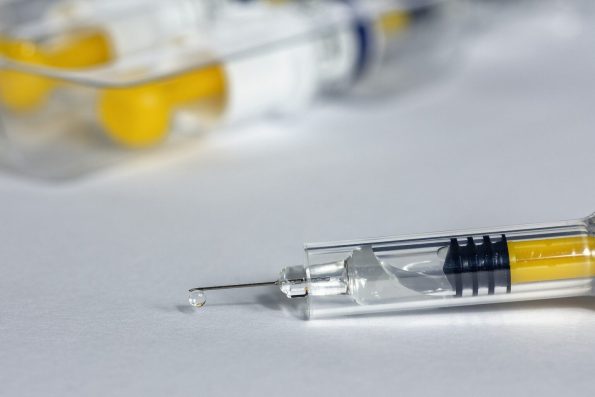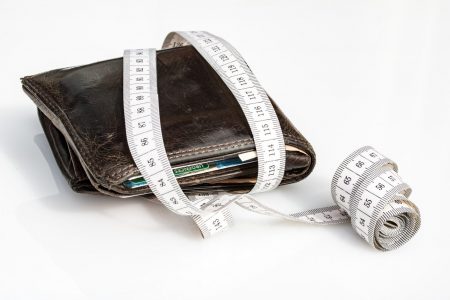Over the years, Botox has gradually become one of the most sought-after non-surgical procedures. Since the procedure is safe and effective, people who seek to improve their looks and minimize creases and wrinkles go for it.
Botox is not only used for cosmetic purposes, it has been found to improve some medical conditions like migraines, urinary issues, etc. Some health practitioners recommend it to their patients.
Many people try to change several things about themselves to make them feel better, confident, or good about themselves. These changes might be born out of medical reasons or merely cosmetic reasons. Either way, there are several options available for people, one of which includes a Botox.
What is Botox?
Botox is a botulinum toxin used by doctors to correct facial creases and wrinkles. It is a neurotoxin aimed at the nervous system to unsettle the nerve signalling processes that trigger muscle contractions. For muscles in the body to contract, the nerves release a chemical known as acetylcholine at the point where the nerve ending meets the muscle cells.
Acetylcholine is what links the receptors on the muscle cells. They cause the cells to either contract, shorten, dilates blood vessels, increase bodily secretions or slow heart rate. Botox injections stop the release of acetylcholine, which in turn stops the muscle cells from contracting. The result of this is a less stiff muscle.
With Botox, signals from the nerves to the muscles are blocked. Depending on the treatment, the muscle of the area injected won’t contract, hence softening and relaxing wrinkles in the process.
Where is Botox Administered?
- Eyebrow lift
- Fine lip line
- Crow’s feet
- Face slimming
- Cheeks
- Neck jowl lift
- migraine
- Under eyes
- Frown line
- TMJ relief
- Neckbands
- Forehead lines
- Chin dimple release
- Hyperhidrosis
Use of Botox
Generally, there are two major uses of Botox. The cosmetic and medical use.
- Cosmetic Use
Botox for cosmetic use is mostly administered on the face. It is left for a patient to pick the area on the face that needs improvement. Some of the areas of the face Botox is administered on include:
- Chin – also known as cobblestone
- Forehead – creases on the forehead
- Eyes – also known as crow’s feet
- Mouth – lines at the corner of the mouth
- Eyebrows – also known as frown lines, glabellar lines or elevens
Botox for cosmetic use is majorly to aid appearance for a short period, like reduce facial wrinkles/crease. Depending on the type of treatment, the result usually lasts between 3 – 6 months. Note that for cosmetic reasons, Botox will not repair wrinkles caused by sun damage or gravity.
- Medical use
Healthcare professionals recommend Botox to treat different medical conditions, most especially, those that affect the neuromuscular system. Generally, Botox for medical reasons is recommended for people from age 18, but in some rare cases, exceptions can be made. Botox for medical use can be done for the following health reasons:
- Alopecia
- Strabismus or crossed eyes
- Overactive bladder
- Sialorrhea – too much secretion of saliva
- Upper limb spasticity
- A severe case of migraine that span for at least 4 – 15 hours daily for months
- Hyperhidrosis or a severe case of underarm sweating
- psoriasis
- Blepharospasm or eyelid spasms caused by dystonia
- Neurological movement disorder
- vulvodynia
- Post-herpetic neuralgia
- Dyshidrotic eczema
- Achalasia
- Raynaud’s disease
Some medical issues can be aided with off-label Botox use. It is advisable to speak to your doctors and get appropriate recommendations for your condition.
Botox Procedure
Getting a Botox is a seamless process, it takes a few minutes for the procedure to be completed. Botulinum toxin is part of what makes up the Botox shot. The toxin is mixed with powder in saline and injected directly into the neuromuscular tissue.
Botox procedure does not require the use of anaesthesia. All that is required is a small needle that’ll be used to inject the Botox into the specific muscles. The procedure is not painful, just a little discomfort that comes with the needle prick.
Recovery Process
The toxin injected takes an average of 24 – 72 hours to take effect, while the full effect of the injection takes 7 – 14 days. So, it is advisable to avoid alcohol for at least a week before the procedure. Aspirins and any anti-inflammatory medications also should be stopped 2 weeks before the treatment to prevent bruising.
If you’re allergic to the drug or any of its ingredients, it is safe to avoid Botox. The injection site might be itchy, avoid scratching or rubbing it for 24 hours to avoiding spreading the Botox to another area. Some practitioner usually advises their patients to stay upright for at least 4 hours after taking Botox shot. Also, exercise should be avoided pending when the effect wears off.
The effect from a Botox shot can last up to 3 – 6 months. But as soon as muscle action gradually slips in, the creases and wrinkles will slowly reappear. So, there might be a need to get another shot again. Note that with time, the creases and wrinkles will appear less severe due to the muscles around the areas shrinking.
Side Effects and Risks
Severe side effects of Botox injections are rare. Most people tolerate the shot well. But since it is general knowledge that the body system differs, some people might react differently. Botulinum toxin can cause the following temporary reactions in people:
- flu
- upset stomach
- urinary issues
- headache
- paralysis or weakness around the muscles
- numbness
- dry eyes/teary eyes
- eyelid drooping
- corneal ulceration
- bruising
- crooked smile/drooling
So, it is advisable for people who are sensitive or allergic to any of the Botox ingredients to seek alternative treatment. Botox should not be administered to a breastfeeding mother, a pregnant woman, or people with neurological disease.
Average Cost of Botox in Canada
The average cost of Botox in Canada per unit is between CA$10 – CA$17.
When considering undergoing a Botox procedure, it is important to be certain of the areas that need improvement and the changes you want. It is advisable to research well on Botox injections, the compositions, brands, etc. before making your decision.
Once you have an idea and you are sure Botox is what you need, you can proceed to your healthcare provider for further information.
Your healthcare provider will give you a rundown on what to expect with the procedure, costs, etc. The cost of getting a Botox shot depends on several factors, some of which include:
- Your province in Canada
- Area of treatment
- If it is for cosmetic or medical purposes
- Healthcare provider
- Strength of facial muscles
- Depth of wrinkle/crease
- Units of Botox required
- Gender of Patient
The most important pricing factor is if the procedure is priced based on the unit of Botox to be used or the treatment area. Most clinics in Canada charge per the number of units required in the treatment area.
It is advisable to go for a practitioner who charges per number of units to be used rather than per area of treatment. This way you’ll be able to account for how much Botox you are getting and paying for with each treatment.
When considering Botox for either cosmetic or medical reasons, it is important to employ the service of a qualified professional with appropriate training to carry out the procedure.
The price difference depends on your healthcare provider. So, depending on the area of treatment, the price range is:
| Area of Treatment | Average Unit Required | Average Cost (CA$) |
| Forehead Lines | 4 – 5 | 40 – 250 |
| Crow’s Feet | 9 – 20 | 180-400 |
| Lips | 4 – 6 | 40 – 300 |
| Jawline, TMJ & Neck Bands | 200 – 600 |
When used for cosmetic purposes, Botox is not covered by Insurance. While for medical reasons, you can check your healthcare provider to get information on the amount due.
The average recommended dosage for Botox
The average recommended dosage depends on the area of treatment. Below is an insight on the recommended dosage, note that men might require a higher dosage.
| Treatment Area | Average Recommended Dosage per Unit |
| Between the eyes | 12 – 20 |
| Crow’s feet | 6 – 15 |
| TMJ Relief | 5 – 10 |
| Forehead Lines | 6 – 15 |
| Frown Lines | 10 – 30 |
| Chin Dimple Release | 2 – 5 |
| Brow Lift | 5 on each side |
| Hyperhidrosis (Underarm) | 50 on each side |
| Face slimming | 5 – 10 on each side |
| Hyperhidrosis (hand) | 50 on each palm |
| Fine lips lines | 4 – 5 on each side |
How to Make Botox Last Longer
Generally, a Botox shot can last for about 3 – 6 months, but with some extra care, you can extend the longevity of your Botox result. Below are some steps to make your Botox last longer:
- Get a skilled Doctor
The injector plays a huge role in the result of a Botox procedure. A skilled and qualified doctor will ensure the procedure goes smoothly without any glitches.
- Engage the muscle
It is advisable to try and engage the muscles around the treatment area. This will help the even distribution of the Botox shot. In the end, extending the result of the procedure.
- Avoid touching injection spot
Although muscle movement is advisable, it is important to avoid touching and using any non-prescribed product on the spot. Touching, rubbing, or even exfoliating the treated skin can lead to product migration. This can have a bad effect afterwards.
- Avoid sun exposure
It is also advisable to use sun protection when going out and maintain healthy skin as the sun can damage the skin if exposed to it. Luckily, it can be prevented. Staying out of the sun as much as possible and taking preventive measures can help prolong the longevity of a Botox result.








1 thought on “Average Cost of Botox in Canada”
How much to help with bladder incontince